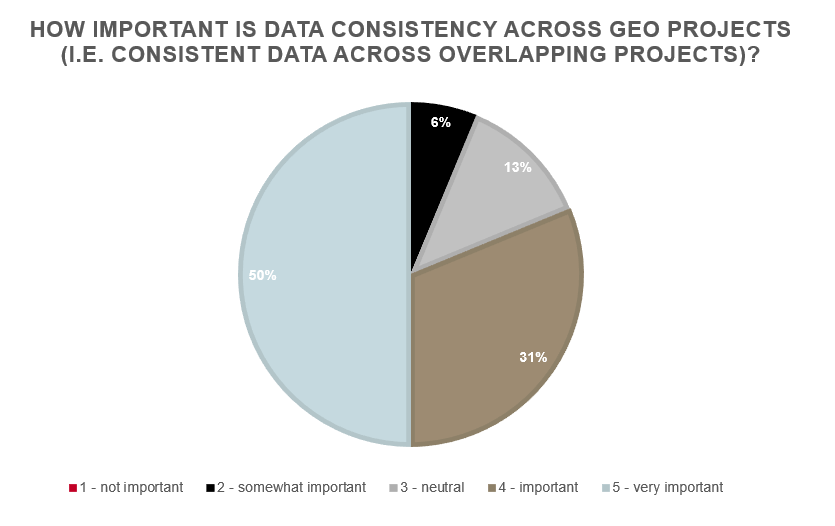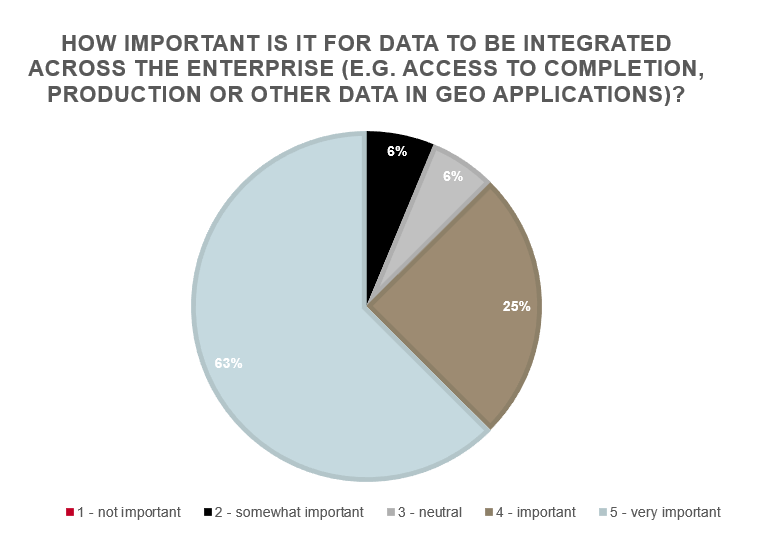Customer Logins
Obtain the data you need to make the most informed decisions by accessing our extensive portfolio of information, analytics, and expertise. Sign in to the product or service center of your choice.
Customer Logins
BLOG
Jan 31, 2023
Tackling the data challenge: Setting the geoscience function up for success in a growth market
Activity in the oil and gas industry increased dramatically in 2022. While this is good news for the industry, it also led to a huge increase in the volume of manual data tasks that eat into the time of highly trained specialist teams. The inefficiencies caused by data management shortcomings are becoming acute for many geoscientists, according to attendees at a roundtable we hosted recently in Calgary. If operators are to seize the potential of a growing market, now is the time to tackle these issues and free up specialists to drive the business forward by focussing on their domains.
The problem for most operators arises from the fact data resides in many different applications that are focused on specific data types, purposes or users; and these applications cannot talk to one another. Most organizations lack the ability to integrate data from different sources and synchronize data updates across departments, applications, projects and users. In short, the needs of geoscience groups are poorly served by one-size-fits-all corporate IT agendas.
Data consistency
One of the biggest data management challenges we see is the lack of data consistency: users cannot be sure the data they are using in one application or project is the same as the data in another. Are they comparing apples to apples? If not, which dataset is up to date and correct? Attendees at our Calgary roundtable highlighted these challenges, with more than three quarters (81%) saying data consistency is either important or especially important. No one ranked data consistency as unimportant.

Data accuracy, timeliness, completeness and, especially consistency, become more difficult to maintain as data volumes and the number of sources increase. Ideally, when a geo-tech updates a well with specific information from one project in one application, the system should propagate that data to every file irrespective of where it resides. That is not the case for most operators. This failure to ensure data consistency leads to reduced productivity, poor decision-making and poor business outcomes.
Data integration
Virtually every organization of any size needs to integrate data from multiple sources to support its business processes and get as complete and consistent a view of the truth as possible. The idiosyncrasies of subsurface data and the challenge of integrating data from hundreds, if not thousands, of geological and geophysical applications—such as Petrel, Kingdom and Petra, among others—force users to fall back on manual processes. Not only does this cause delays, but it also increases operational risk.
Lack of data integration was one of the key pain points discussed in Calgary. In a poll, 88% of attendees at our roundtable ranked data integration across the enterprise as important or very important. Again, nobody ranked data integration as unimportant. The industry knows this is a problem, but until now, it has been difficult to solve because of functional and technology silos.

The diversity of data types and sources complicates the integration challenge. However, this can be surmounted by adopting data-type-agnostic and data-model-agnostic technology.
Automating data-intensive workflows and delivering trusted data for use in decision-making is within reach. An enterprise approach to data management, overlaid with workflows specifically designed for the upstream industry's geo groups, is the only way to resolve the current impasse. A true enterprise data management solution will address these challenges by synchronizing data updates at the project, application, and departmental levels. This will ensure that all users, from drilling and field management to finance and risk management, have access to the data they need to do their jobs without delay and, critically, they will all be working from the same data. This is a best practice that we are making a reality for our customers today.
This article was published by S&P Global Commodity Insights and not by S&P Global Ratings, which is a separately managed division of S&P Global.
{"items" : [
{"name":"share","enabled":true,"desc":"<strong>Share</strong>","mobdesc":"Share","options":[ {"name":"facebook","url":"https://www.facebook.com/sharer.php?u=http%3a%2f%2fqa.www.spglobal.com%2fmarketintelligence%2fen%2fmi%2fresearch-analysis%2ftackling-the-data-challenge-setting-the-geoscience-function-up.html","enabled":true},{"name":"twitter","url":"https://twitter.com/intent/tweet?url=http%3a%2f%2fqa.www.spglobal.com%2fmarketintelligence%2fen%2fmi%2fresearch-analysis%2ftackling-the-data-challenge-setting-the-geoscience-function-up.html&text=Tackling+the+data+challenge%3a+Setting+the+geoscience+function+up+for+success+in+a+growth+market+%7c+S%26P+Global+","enabled":true},{"name":"linkedin","url":"https://www.linkedin.com/sharing/share-offsite/?url=http%3a%2f%2fqa.www.spglobal.com%2fmarketintelligence%2fen%2fmi%2fresearch-analysis%2ftackling-the-data-challenge-setting-the-geoscience-function-up.html","enabled":true},{"name":"email","url":"?subject=Tackling the data challenge: Setting the geoscience function up for success in a growth market | S&P Global &body=http%3a%2f%2fqa.www.spglobal.com%2fmarketintelligence%2fen%2fmi%2fresearch-analysis%2ftackling-the-data-challenge-setting-the-geoscience-function-up.html","enabled":true},{"name":"whatsapp","url":"https://api.whatsapp.com/send?text=Tackling+the+data+challenge%3a+Setting+the+geoscience+function+up+for+success+in+a+growth+market+%7c+S%26P+Global+ http%3a%2f%2fqa.www.spglobal.com%2fmarketintelligence%2fen%2fmi%2fresearch-analysis%2ftackling-the-data-challenge-setting-the-geoscience-function-up.html","enabled":true}]}, {"name":"rtt","enabled":true,"mobdesc":"Top"}
]}




